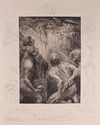
19th, 20th & 21st Century Fine Prints
707-546-7352 · fax 707-546-7924 · web: www.annexgalleries.com · email: artannex@aol.com
Bruno Heroux Biography
Bruno Heroux
German
1868–1944
Biography
Painter, printmaker, illustrator, and educator Bruno Heroux was born in Leipzig, Germany, on December 20, 1868. His father, Louis Heroux, was himself an engraver who encouraged his son's artistic pursuits. Heroux studied at the Royal Academy of Graphic Arts in Leipzig from 1886 to 1892. Following his graduation he worked as a commercial artist and illustrator to support himself, and in 1903 he participated in the International Art Exhibition in Dresden. As well, he began traveling to Paris in 1900 and would exhibit regularly at the Salon des Artistes Francais. Among his supporters and patrons was the artist Max Klinger, whose work greatly influenced Heroux.
In 1903 he took a position at the Royal Academy as a painting instructor, earning the title of professor in 1908. That same year, he published a catalogue raisonne of his first 200 printed works, opening the doors to commissions by a variety of prominent figures and publishers. He was commissioned to illustrate a variety of publications, including a three volume atlas on the human anatomy by physician Walter Spalteholz; portfolios of scenes of Italy and Russia; and the German artist portfolio Das Volkerschlactdenkmal for which he served as artistic director. His teaching career at the Royal Academy spanned 36 years.
In 1943 the majority of Heroux's etching plates were destroyed in air raids over the city of Leipzig during World War II. He died in on February 14, 1944.
Heroux was the chairman of the General German Art Cooperative for several years, as well an honorary member of the Leipzig Artists' Association. He received the Albrecht Order Knight's Class medal. His work is held at the Finnish National Gallery and the British Museum.

